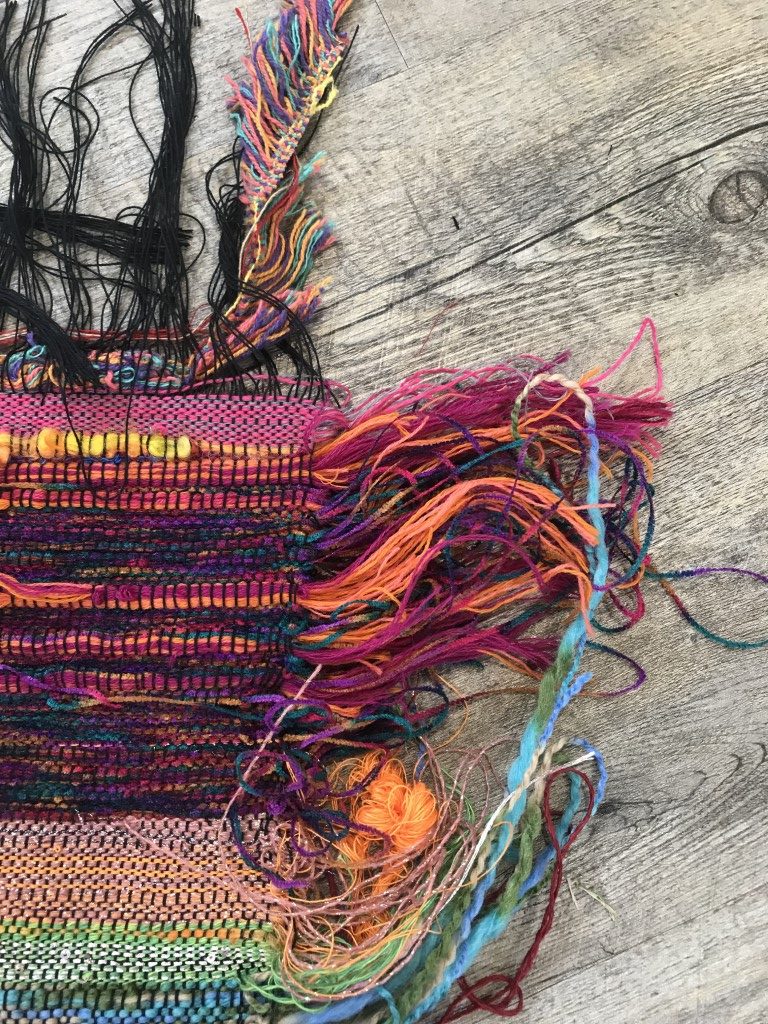Saori weaving can be a bit of a mystery. It trying to understand Misao Jo’s ideas, it can be difficult because of language, cultural translation and history. Some people see examples of Saori weaving and immediately confine their judgement to traditional handweaving values. Technical complexity, perfectly aligned edges, and functional cloth which will last for generations. Of course, I value these things too, I’m a weaver. But Saori weaving is not that.

I recently came across Elizabeth Mattis Namgyel’s site where she wrote about “the mark of non-creating” in relation to Buddhist thought. She writes about a painter, Yahne Le Toumelin, who uses a free, non-conceptual and expressive approach, watching texture and colour unfold without passing judgement like “ugly” ‘beautiful” “good” or “bad”. The artist isn’t a gifted creative as we view it but someone who doesn’t cling to preferences or seeking something that will have good judgement by others. It is a way of allowing our natural creativity to seep through into the woven cloth. The mark of non-creating.

I think non-creating is important. It is an inclusive human way of relating to and advancing our natural creative abilities…in all of us. In workshops I use all the good words to others which may be encouraging or not but they are always sincere because I honestly enjoy and delight in every row that all of my weavers have woven. Well they aren’t my weavers but I had a moment with them in Saori so I claim them!
If I can draw on Saori weaving as non-creating it works better for me. Weaving is better than some other forms of visual art because you begin with such a solid physical state to kick off from. You have a warp and you can put something in the open row, something, anything, any colour, any fibre. But it’s never really just anything, a little decision is made by you. You don’t have to ‘know’ anything you just non-create.

Leave a Reply